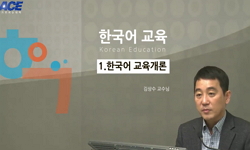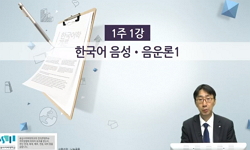Currently, a large part of the Khitan Scripts remains undeciphered. In this study, it is considered that this problem is a result of the fact that most scholars excessively relied on a specific language, that is Mongolian language, in the decipher pro...
http://chineseinput.net/에서 pinyin(병음)방식으로 중국어를 변환할 수 있습니다.
변환된 중국어를 복사하여 사용하시면 됩니다.
- 中文 을 입력하시려면 zhongwen을 입력하시고 space를누르시면됩니다.
- 北京 을 입력하시려면 beijing을 입력하시고 space를 누르시면 됩니다.

거란문자 해독에 있어 다고르어와 한국어 활용의 필요성 = The Necessity of Using Dagur and Korean Language to Decipher the Khitan Scripts
한글로보기https://www.riss.kr/link?id=A108034575
- 저자
- 발행기관
- 학술지명
- 권호사항
-
발행연도
2021
-
작성언어
-
- 주제어
-
KDC
900
-
등재정보
KCI등재후보
-
자료형태
학술저널
-
수록면
7-45(39쪽)
- 제공처
-
0
상세조회 -
0
다운로드
부가정보
다국어 초록 (Multilingual Abstract)
In addition, a new research methodology is also proposed, which is an approach using epitaph on tombstones written in Chinese characters of the same period as an intermediate medium, considering that the lin-guistic source of Khitan characters is limited to the epigraph materials. In other words, it is a method of sorting Chinese words from epitaph on tombstones which have not yet been deciphered into Khitan lan-guage, linking them to Dagur language, and matching them with un- deciphered the Khitan Scripts again.
Furthermore, this study proposes to use ancient Korean language such as Goguryeo language, which corresponds to be ancestral language of the Khitan, in order to decipher the Khitan Scripts as well as Dagur lan-guage, and some language materials necessary for the proposal are also introduced.
Currently, a large part of the Khitan Scripts remains undeciphered. In this study, it is considered that this problem is a result of the fact that most scholars excessively relied on a specific language, that is Mongolian language, in the decipher process and did not sufficiently consider neighboring languages. As an alternative to that problem, this study proposes the necessity of deciphering the Khitan language through Dagur language. In order to prove the validity of this proposal, a basic literature search shows that the proportion of Dagur language, which forms a paronym relationship with the native Khitan language, is numerically close to the level of the Written Mongolian or the Middle Mongolian. In this process, several related cases are provided, and lan-guage materials necessary for the study are also introduced in detail.
In addition, a new research methodology is also proposed, which is an approach using epitaph on tombstones written in Chinese characters of the same period as an intermediate medium, considering that the lin-guistic source of Khitan characters is limited to the epigraph materials. In other words, it is a method of sorting Chinese words from epitaph on tombstones which have not yet been deciphered into Khitan lan-guage, linking them to Dagur language, and matching them with un- deciphered the Khitan Scripts again.
Furthermore, this study proposes to use ancient Korean language such as Goguryeo language, which corresponds to be ancestral language of the Khitan, in order to decipher the Khitan Scripts as well as Dagur lan-guage, and some language materials necessary for the proposal are also introduced.
동일학술지(권/호) 다른 논문
-
- 청계사학회
- 박홍갑 ( Park Hong-gab )
- 2021
- KCI등재후보
-
- 청계사학회
- 임선빈 ( Yim Seon-bin )
- 2021
- KCI등재후보
-
- 청계사학회
- 허흥식 ( Heo Heungsik )
- 2021
- KCI등재후보
-
- 청계사학회
- 나영훈 ( Na Yeong-hun )
- 2021
- KCI등재후보




 KISS
KISS






